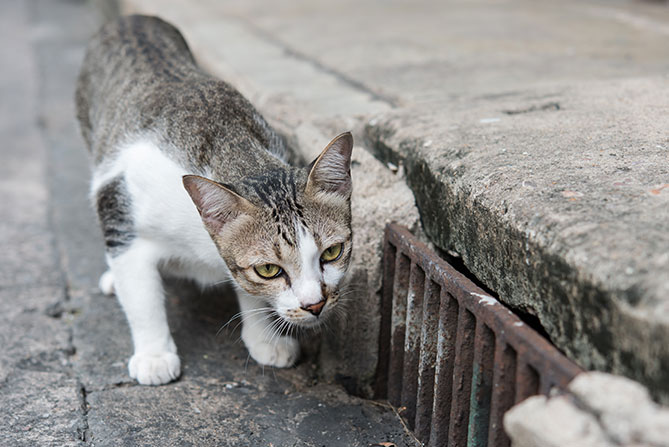Any pet owner who has had a cat or dog go missing can attest to the worry they feel at the thought of their beloved furry friend wondering the streets afraid and alone. They have to count on the kindness of strangers to help their pet find its way home. As good Samaritans, there are ways we can all help ensure that pets remain safe and off the streets. If you ever find yourself coming across a stray cat or dog, here’s what you need to know.
Safety first
If you’re an animal lover, chances are you’ll want to do whatever it is you can to help an animal in need. However for your own safety, the safety of others, and the safety of the animal, it’s crucial that you don’t rush to try and pull the pet to safety. The truth is, you know nothing about the animal and how it might react as you approach. The last thing you want is to end up getting attacked or hurting the animal.
First, you’ll want to assess the situation. Where is the animal? What is it doing? Does it appear to pose a threat? What happens if you try and take a few steps towards it? If you’re unsure, the best thing you can do is try and call the local council animal control. Try and stay with the animal until help arrives.
Shelter
If the animal looks approachable, cautiously make your way towards them. The closer you get, the easier it will be to tell if there is a threat. If you feel comfortable, try and bring the pet to safety. Depending on what you’re most comfortable with, you can either bring the stray to the closest shelter, or home with you.
If you have a garage or a fenced in backyard, you can always take them there if you aren’t comfortable bringing them into your home. Regardless of what you decide, you should still contact the shelter or local council animal control to make them aware of the situation. They may have already received a call from the owner notifying them that their pet is lost.
Investigate
Now that you’ve secured the pet, you’ll want to make them as comfortable as possible in their temporary surroundings. You could put out blankets and offer them a treat. Essentially, you want to get them at ease so you can start your detective work. Does the dog or cat have any tags? Do they have any identifying information that will help you find the owner?
You’ll also want to scope out the neighbourhood where the animal was found to see if there were any posters for a missing pet. If you’re willing, knock on a few doors to see if anyone recognises the missing animal. If you don’t have any success with those methods, start calling the different animal groups in your area. Spread the word. Either someone will know something that gives you a lead on the pet’s family, or they’ll be able to share the information.
Another great tool is social media. There are many Facebook groups dedicated to lost pets. Write a message on these various groups to see if anyone knows anything. The more shares you can get, the better chance you’ll have of tracking down the family.
Veterinarian
If you’re not having any luck with the above methods, try bringing the pet to a local veterinarian as they may be microchipped. The chip would contain the animal’s identification information. The vet may also be able to tell if the pet is malnourished or dehydrated, which may give an indication of how long the pet has been missing.
Caution
If you start to get calls from people claiming that the lost pet is theirs, make sure to ask questions, but do not volunteer any information about the pet. Ask open-ended questions that will require the person on the phone to answer with specific details about the pet. You can always ask what the pet’s name is. Once they’ve divulged the information, try using the name to get the pet’s attention. This doesn’t always work, but it’s worth a try.
The important thing is that you don’t want to release the pet into the care of someone who isn’t the owner. Use common sense and trust your instincts. If you decide to post a picture of the lost pet, make sure you leave certain details out so you can be certain the real owner can identify the pet.
If all else fails
There’s always the possibility that the animal was abandoned or that you may not be successful in finding its owner. Unfortunately, not every story has a happy ending. If that’s the case, you’ll have to turn the pet over to a shelter. Don’t be discouraged, you’ve done everything you can. Hopefully your efforts will be fruitful, and the pet will find its way home soon.
Your own pet
The good news is that if you have pets of your own, you’ll know exactly what precautions to take should you ever find yourself in a similar situation. Read our post on what to do if you’ve lost a pet for more information







Leave A Comment